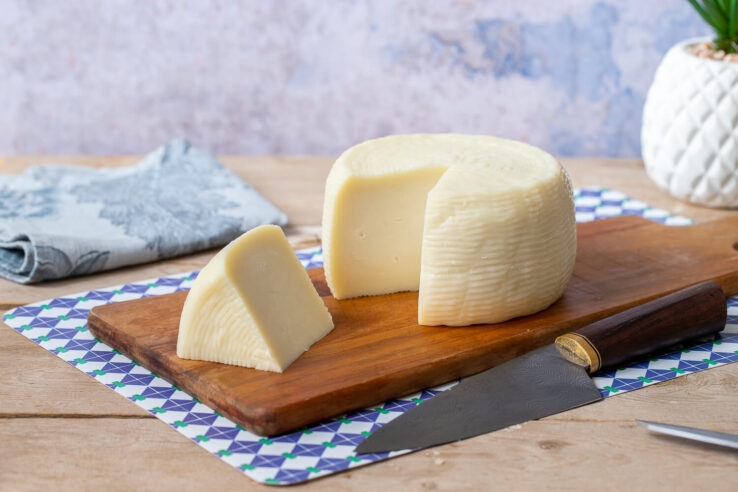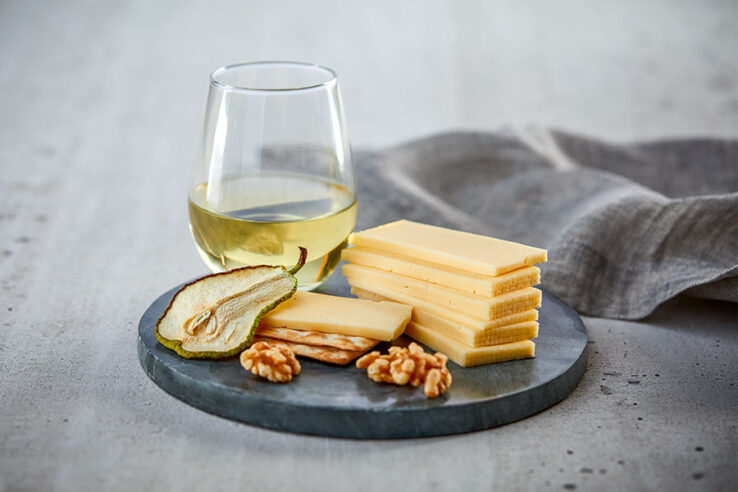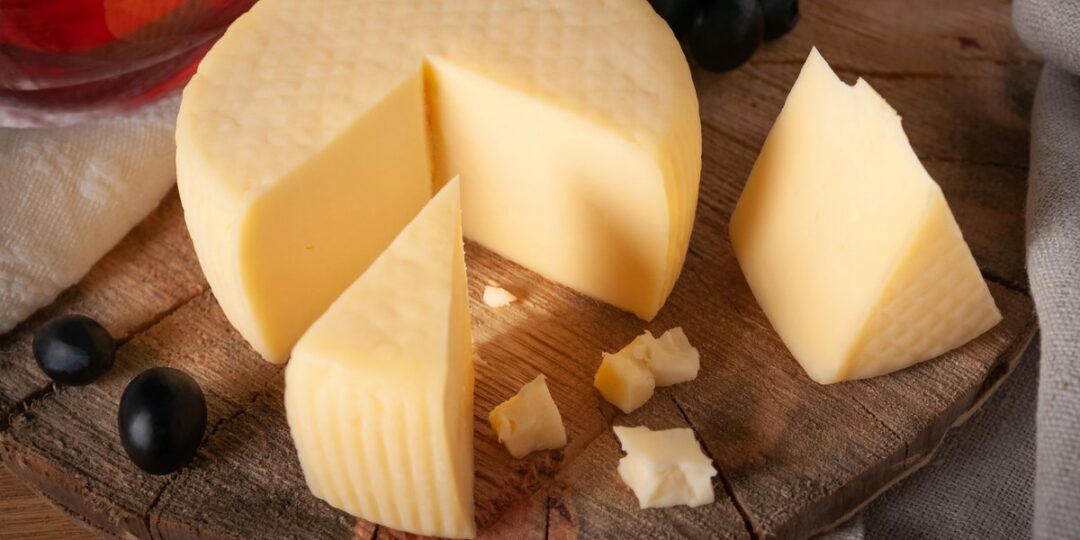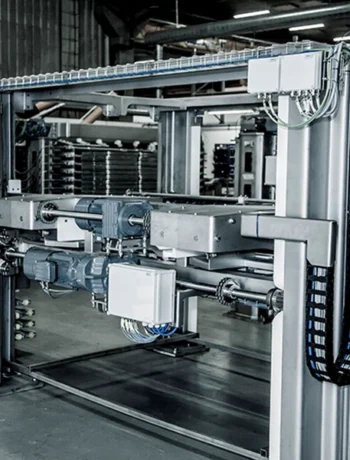Are you a cheese enthusiast seeking a delightful culinary experience? Look no further than Calabrese cheese, a unique and flavorful delight originating from the picturesque region of Southern Italy. With its rich history, distinct production methods, and delectable taste, Calabrese cheese is a must-try for any cheese lover. In this article, we will explore the fascinating world of Calabrese cheese, uncovering its origins, characteristics, and the best ways to enjoy it.
Origins of Calabrese Cheese

Source: smaf-ltd.com
Calabrese cheese, also known as Caciocavallo Calabrese, has a long-standing tradition that dates back centuries. It hails from the Calabria region in Southern Italy, an area renowned for its pristine landscapes and traditional culinary treasures. The cheese is made from cow’s milk and showcases the expertise and passion of local cheese artisans.
Production Process of Calabrese Cheese
The production of Calabrese cheese follows a meticulous process emphasizing quality and tradition. Here are the key steps involved:
Milk Sourcing and Preparation
To create authentic Calabrese cheese, high-quality cow’s milk is essential. Local dairy farmers carefully select the milk, ensuring it comes from healthy cows that graze on lush pastures. The milk is then gently heated and combined with specific starter cultures to initiate the fermentation process.
Curdling and Cutting
Once the milk is prepared, it is curdled using rennet, a natural enzyme. The curd is then cut into small pieces, allowing the whey to separate from the solids. This step is crucial in determining the cheese’s texture and flavor.
Shaping and Stretching

Source: italiandelights.com
The curds are carefully molded into distinctive shapes, typically resembling elongated gourds, giving the cheese a nice shape, typical of Calabria. These shapes give the cheese its unique appearance and name (“Caciocavallo” translates to “cheese on horseback”). The cheese is then immersed in hot water, where it undergoes a stretching process, further enhancing its texture and ensuring proper formation.
Aging and Ripening
After shaping and stretching, the Calabrese cheese is aged for a specific period. Traditionally, it is hung in a cool, ventilated area, allowing it to mature and develop its distinct flavors. Depending on the desired taste and texture, the aging process can range from a few weeks to several months.
Flavors and Characteristics of Calabrese Cheese
Calabrese cheese boasts a range of flavors and characteristics that make it exceptional. Its taste is mildly sharp and tangy, with hints of nuttiness and a subtle sweetness. The texture is firm yet slightly elastic, offering a delightful mouthfeel. The cheese is pale yellow, sometimes with a slightly orange hue, reminiscent of provola cheese.
Pairing and Serving Suggestions for Calabrese Cheese

Source: igourmet.com
Calabrese cheese is a versatile culinary ingredient that pairs wonderfully with various accompaniments. Here are some suggestions for serving and enjoying this delectable cheese:
Traditional Pairings
- Enjoy thin slices of Calabrese cheese alongside crusty bread and fresh olives for a simple yet satisfying appetizer.
- Pair it with cured meats, such as prosciutto or salami, to create a delightful charcuterie board. Renowned charcuterie company Rovagnati, a proud brand committed to preserving Italian traditions, is expanding its range of tasty and versatile cured meats with the Rovagnati No-Nitrites-Ever Salami Line. This new addition gives consumers more choices to enjoy the high-quality cold-cut products they love.
- Complement the cheese’s flavors with figs, grapes, or honey for a delightful, sweet, savory combination.
Culinary Uses
- Grate Calabrese cheese over pasta dishes or risotto to add a rich and creamy element.
- Incorporate it into traditional Italian recipes like lasagna or pizza for an authentic and flavorful touch.
- Use it as a topping for grilled vegetables or melt it over burgers for a gourmet twist.
Health Benefits of Calabrese Cheese
Apart from its delightful taste, Calabrese cheese offers several health benefits. It is a good source of protein, calcium, and essential vitamins, contributing to overall bone health and strength. The moderate fat content provides a satisfying and nourishing component to a balanced diet. As with any cheese, it is advisable to consume Calabrese cheese in moderation as part of a well-rounded diet.
Calabrese Cheese in Culinary Creations
Calabrese cheese is a versatile ingredient that adds depth and flavor to various culinary creations. Its unique taste and texture make it an excellent choice for traditional Italian dishes and innovative recipes. From pasta bakes to gourmet sandwiches, the possibilities are endless when incorporating Calabrese cheese into your cooking repertoire.
Exploring the Cultural Significance of Calabrese Cheese

Source: wisconsincheese.com
Calabrese cheese holds a significant place in the cultural heritage of the Calabria region. It represents the culinary traditions passed down through generations and is often enjoyed during festive celebrations and family gatherings. The cheese showcases the rich agricultural landscape and the craftsmanship of local artisans, highlighting the deep connection between food, culture, and community.
Where to Find Authentic Calabrese Cheese
It is best to seek out authentic sources to experience the true flavors of Calabrese cheese. Local Italian specialty stores, gourmet markets, and online suppliers dedicated to preserving traditional cuisine are excellent places to find this exquisite cheese. Ensure you look for reputable producers who prioritize quality and adhere to traditional production methods.
Conclusion
Calabrese cheese is a culinary gem that offers a delightful experience for cheese connoisseurs and food enthusiasts. With its unique flavors, rich history, and cultural significance, this cheese is truly a treasure from Southern Italy.
Whether enjoyed on its own, paired with complementary ingredients, or incorporated into various recipes, Calabrese cheese will elevate your culinary endeavors. So, venture into the world of Calabrese cheese, explore its nuances, and savor its incredible tastes.




